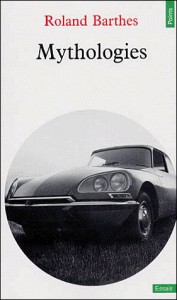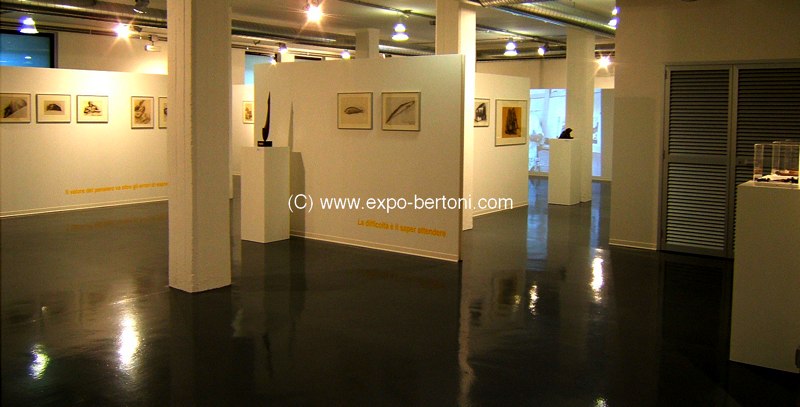Roland Gérard Barthes’ famous quote about the Citroen DS:
“I think that cars today are almost the exact equivalent of the great Gothic cathedrals: I mean the supreme creation of an era, conceived with passion by unknown artists, and consumed in image if not in usage by a whole population which appropriates them as a purely magical object.
It is obvious that the new Citroen has fallen from the sky inasmuch as it appears at first sight as a superlative object .. We must not forget that an object is the best messenger of a world above that of nature: one can easily see in an object at once a perfection and an absence of origin, a closure and a brilliance, a transformation of life into matter (matter is much more magical than life), and in a word a silence which belongs to the realm of fairy-tales. The D.S. – the “Goddess” – has all the features (or at least the public is unanimous in attributing them to it at first sight) of one of those objects from another universe which have supplied fuel for the neomania of the eighteenth century and that of our own science-fiction: the Deesse is first and foremost a new Nautilus.
This is why it excites interest less by its substance than by the junction of its components. It is well known that smoothness is always an attribute of perfection because its opposite reveals a technical and typically human operation of assembling: Christ’s robe was seamless, just as the airships of science-fiction are made of unbroken metal. The DS 19 has no pretensions About being as smooth as cake-icing, although its general shape is very rounded; yet it is the dove-tailing of its sections which interest the public most: one keenly fingers the edges of the windows, one feels along the wide rubber grooves which link the back window to its metal surround. There are in the D.S. the beginnings of a new phenomenology of assembling, as if one progressed from a world where elements are welded to a world where they are juxtaposed and hold together by sole virtue of their wondrous shape, which of course is meant to prepare one for the idea of a more benign Nature.
As for the material itself, it is certain that it promotes a taste for lightness in its magical sense. There is a return to a certain degree of streamlining, new, however, since it is less bulky, less incisive, more relaxed than that which one found in the first periods of this fashion. Speed here is expressed by less aggressive, less athletic signs, as if it were evolving from a primitive to a classical form. This spiritualization can be seen in the extent, the quality and the material of the glass-work. The Deesse is obviously the exaltation of glass, and pressed metal is only a support for it. Here, the glass surfaces are not windows, openings pierced in a dark shell; they are vast walls of air and space, with the curvature, the spread and the brilliance of soap-bubbles, the hard thinness of a substance more entomological than mineral (the Citroen emblem with its arrows, has in fact become a winged emblem, as if one was proceeding from the category of propulsion to that of spontaneous motion, from that of the engine to that of the organism).
We are therefore dealing here with a humanized art, and it is possible that the Deesse marks a change in the mythology of cars. Until now, the ultimate in cars belonged rather to the bestiary of power; here it becomes At once more spiritual and more object-like, and despite some concessions to neomania (such as the empty steering wheel), it is now more homely , more attuned to this sublimation of the utensil which one also finds in the design of contemporary household equipment.
The dashboard looks more like the working surface of a modern kitchen than the control room of a factory; the slim panes of matt fluted metal, the small levers topped by a white ball, the very simple dials, the very discreetness of the nickel-work, all this signifies a kind of control exercised over motion rather than performance. One is obviously turning form an alchemy of speed to a relish in driving.
The public, it seems, has admirably divined the novelty of the themes which are suggested to it. Responding at first to the neologism (a whole publicity campaign had kept it on the alert for years), it tries very quickly to fall back on a behaviour which indicates adjustment and a readiness to use (“You’ve got to get used to it “). In the exhibition halls, the car on show is explored with an intense, amorous studiousness: it is the great tactile phase of discovery, the moment when visual wonder is about to receive the reasoned assault of touch (for touch is the most demystifying of all senses, unlike sight, which is the most magical). The bodywork, the lines of union are touched, the upholstery palpated, the seats tried, the doors caressed, the cushions fondled; before the wheel, one pretends to drive with one’s whole body. The object here is totally prostituted, appropriated: originating from the heaven of Metropolis , the Goddess is in a quarter of an hour mediatized, actualizing through this exorcism the very essence of petit-bourgeois advancement.”
Roland Barthes – Mythologies Vintage ISBN 0 09 997220 4














[…] important symbol of our age. Another possibility is the one suggested by Barthes, who made this case for the car as […]
marvellous